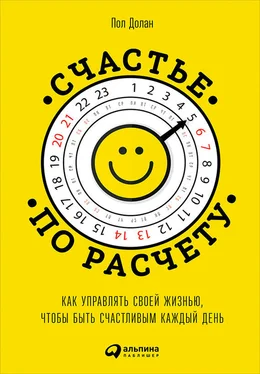Ross L. The intuitive psychologist and his shortcomings: distortions in the attribution process. Advances in Experimental Social Psychology 1977; 10: 173–220.
Gilbert D.T., Malone P.S. The correspondence bias. Psychological Bulletin 1995; 117: 21.
Ouellette J.A., Wood W. Habit and intention in everyday life: the multiple processes by which past behavior predicts future behavior. Psychological Bulletin 1998; 124: 54.
Webb T.L., Sheeran P. Does changing behavioral intentions engender behavior change? A meta-analysis of the experimental evidence. Psychological Bulletin 2006; 132: 249–68; Astell-Burt T., Feng X., Kolt G.S. Greener neighborhoods, slimmer people? Evidence from 246,920 Australians. International Journal of Obesity 2013.
Frijters P. Do individuals try to maximize general satisfaction? Journal of Economic Psychology 2000; 21: 281–304.
Фестингер Л. Теория когнитивного диссонанса. – М.: Ювента, 1999.
Festinger L., Carlsmith J.M. Cognitive consequences of forced compliance. Journal of Abnormal and Social Psychology 1959; 58: 203–10.
Masataka N., Perlovsky L. Music can reduce cognitive dissonance. Nature Precedings 2012; Knox R., Inkster J. Postdecision dissonance at post time. Journal of Personality and Social Psychology 1968; 8: 319–23; Foster J.D., Misra T.A. It did not mean anything (about me): cognitive dissonance theory and the cognitive and affective consequences of romantic infidelity. Journal of Social and Personal Relationships 2013.
Mullainathan S., Washington E. Sticking with your vote: cognitive dissonance and political attitudes. American Economic Journal: Applied Economics 2009; 1: 86–111.
Aizer A., Dal Bo P. Love, hate and murder: commitment devices in violent relationships. Journal of Public Economics 2009; 93: 412–28.
Dolan P., Lordan G. Moving up and sliding down: an empirical assessment of the effect of social mobility on subjective wellbeing. Centre for Economic Performance, CEP Discussion Paper No. 1190, 2013.
Graham C., Pettinato S. Frustrated achievers: winners, losers and subjective well-being in new market economies. Journal of Development Studies 2002; 38: 100–140.
May D.R., Gilson R.L., Harter L.M. The psychological conditions of meaningfulness, safety and availability and the engagement of the human spirit at work. Journal of Occupational and Organizational Psychology 2004; 77: 11–37.
Schooler J., Ariely D., Loewenstein G. The pursuit and assessment of happiness. In: Brocas I., Carrillo J.D., eds. The psychology of economic decisions: vol. 1: rationality and wellbeing. Oxford University Press, 2003.
Polivy J., Herman C.P. The false-hope syndrome: unfulfilled expectations of self-change. Current Directions in Psychological Science 2000; 9: 128–31.
Sharot T. The optimism bias: why we’re wired to look on the bright side. Constable & Robinson, 2012.
Joule R.V., Girandola F., Bernard F. How can people be induced to willingly change their behavior? The path from persuasive communication to binding communication. Social and Personality Psychology Compass 2007; 1: 493–505.
Wegner D.M., Schneider D.J., Carter S.R., White T.L. Paradoxical effects of thought suppression. Journal of Personality and Social Psychology 1987; 53: 5–13.
Hosser D., Windzio M., Greve W. Guilt and shame as predictors of recidivism: a longitudinal study with young prisoners. Criminal Justice and Behavior 2008; 35: 138–52.
Sifton E. The serenity prayer: faith and politics in times of peace and war. W. W. Norton, 2005.
Dennett D.C. Intuition pumps and other tools for thinking. Penguin, 2013.
Shakespeare W. Macbeth, annotated edition. Wordsworth Editions, 1992.
Hughes J.R., Higgins S.T. Nicotine withdrawal versus other drug withdrawal syndromes: similarities and dissimilarities. Addiction 1994; 89: 1461–70.
Richardson C.R., Newton T.L., Abraham J.J., Sen A., Jimbo M, Swartz A.M. A meta-analysis of pedometer based walking interventions and weight loss. Annals of Family Medicine 2008; 6: 69–77.
Glynn L.G., Murphy A.W., Smith S.M., Schroeder K., Fahey T. Interventions used to improve control of blood pressure in patients with hypertension. In: The Cochrane Collaboration, Glynn L.G., eds. Cochrane Database of Systematic Reviews. John Wiley & Sons, 2010.
Wisdom J., Downs J.S., Loewenstein G. Promoting healthy choices: information versus convenience. American Economic Journal: Applied Economics 2010; 2: 164–78.
Wing R.R., Tate D.F., Gorin A.A., Raynor H.A., Fava J.L. A self-regulation program for maintenance of weight loss. New England Journal of Medicine 2006; 355: 1563–71.
Stice E., Yokum S., Blum K., Bohon C. Weight gain is associated with reduced striatal response to palatable food. Journal of Neuroscience 2010; 30: 13105–9.
Rozin P., Kabnick K., Pete E., Fischler C., Shields C. The ecology of eating: smaller portion sizes in France than in the United States help explain the French paradox. Psychological Science 2003; 14: 450–54.
Hetherington M.M., Anderson A.S., Norton G.N.M., Newson L. Situational effects on meal intake: a comparison of eating alone and eating with others. Physiology & Behavior 2006; 88: 498–505.
Ogden J., Coop N., Cousins C., et al. Distraction, the desire to eat and food intake: towards an expanded model of mindless eating. Appetite 2012.
Wansink B., Just D.R., Payne C.R. Mindless eating and healthy heuristics for the irrational. American Economic Review 2009; 99: 165–69.
Zajonc R.B., Murphy S.T., Inglehart M. Feeling and facial efference: implications of the vascular theory of emotion. Psychological Review 1989; 96: 395.
Niedenthal P.M. Embodying emotion. Science 2007; 316: 1002–5.
Grandey A.A., Fisk G.M., Mattila A.S., Jansen K.J., Sideman L.A. Is “service with a smile” enough? Authenticity of positive displays during service encounters. Organizational Behavior and Human Decision Processes 2005; 96: 38–55.
Umbreit J., Lane K.L., Dejud C. Improving classroom behavior by modifying task difficulty effects of increasing the difficulty of too-easy tasks. Journal of Positive Behavior Interventions 2004; 6: 13–20.
Hackman J.R., Oldham G.R. Motivation through the design of work: test of a theory. Organizational Behavior and Human Performance 1976; 16: 250–79.
Читать дальше
Конец ознакомительного отрывка
Купить книгу












